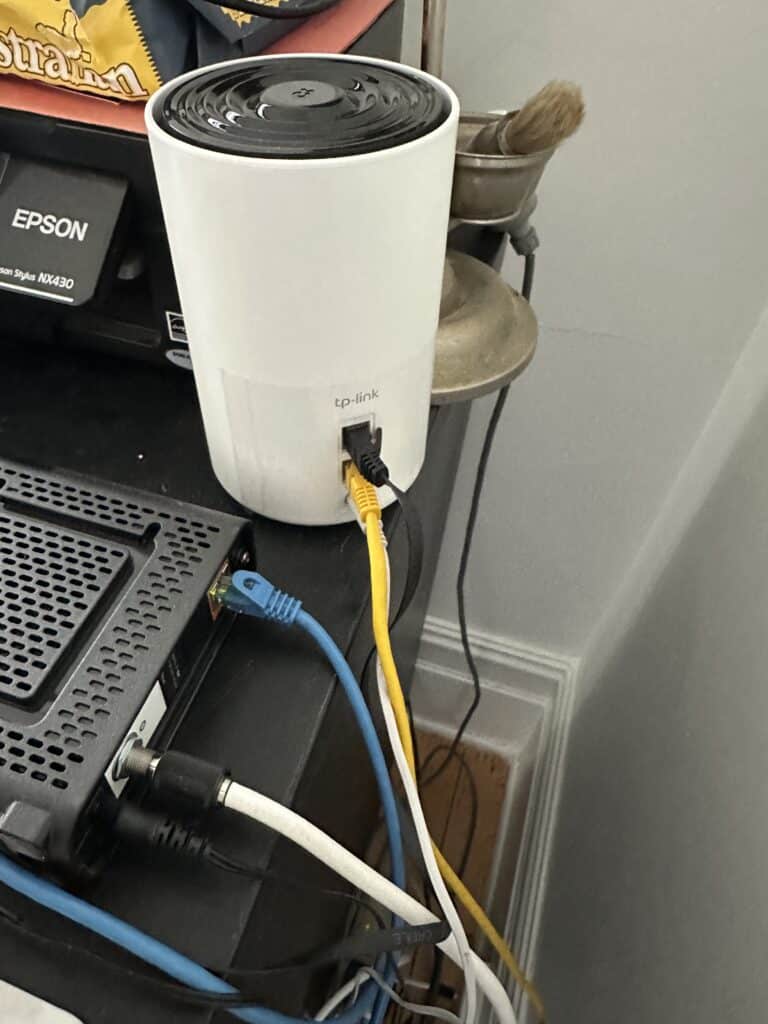Why Does My Home Internet Keep Dropping Out? A Real Case Study from Mornington
We’ve always been asked the question – “Why Does My Home Internet Keep Dropping Out?”
It starts small.
A video call freezes. Netflix buffers. The smart lights flicker offline for a second. You think, ah, just a hiccup. But then it happens again. And again.
That’s how it began for a client in Mornington. Lovely coastal home, fast FTTP connection, brand-new Netgear router.
On paper, the setup should’ve been bulletproof. Yet their internet kept dropping randomly — sometimes every few hours, sometimes every few minutes.
The Mornington Mystery
We got the call early in the week.
“Everything disconnects randomly,” they said. “Zoom calls cut out, the TV says ‘no connection’, phones drop Wi-Fi. But when it works — it’s lightning fast.”
That last part was the clue. If it’s fast when it works, then the issue isn’t with the NBN line itself. It’s almost always inside the home network — the local setup between devices, router, and Wi-Fi environment.
FTTP is generally reliable, but even fibre can have issues if something in the chain — optical network terminal (ONT), router firmware, interference, or even overheating — acts up.
Step 1: The Quick Checks
We arrived mid-morning. The client, a remote worker and parent of two, showed us around. “It drives me crazy,” she said, waving her phone. “One minute it’s perfect, then it drops, and everything in the house complains.”
They’d already restarted the router more times than they could count. So we started systematically:
-
Checked NBN status — no outages in Mornington.
-
Verified FTTP link lights — solid green, no alarms.
-
Logged into the router dashboard — signal, sync, IP all fine. Speeds? A solid 940 Mbps down / 45 Mbps up when tested via cable.
So the line was fine. The hardware was fine.
Step 2: Too Many Devices, Too Little Harmony
Next clue: device count.
We asked how many were connected. “I’m not sure,” she said. “A lot?”
We looked at the router interface. 36 active connections. Phones, laptops, iPads, two smart TVs, doorbell, printer, thermostats, cameras, Alexa, even the robot vacuum.
The Netgear router was solid, but it was working too hard. Single access point, large house, thick brick walls, multiple floors — a recipe for interference and overloading.
Step 3: The Dropout Pattern
We sat for a while, monitoring. Sure enough, every 15–20 minutes, a brief disconnect. Sometimes it was a full Wi-Fi drop, other times just a DNS timeout — pages wouldn’t load though the signal icon still showed full bars.
That kind of pattern often points to:
-
Wi-Fi congestion (too many devices on 2.4GHz)
-
Channel interference (overlapping networks nearby)
-
Router heat or memory exhaustion (firmware choking under heavy connections)
We scanned nearby networks — over a dozen were broadcasting on the same channel. It’s common in suburban areas like Mornington, where every neighbour runs their own Wi-Fi network on default settings.
Step 4: Diagnosing the Interference
We pulled out our Wi-Fi analyzer which showed strong signal near the router but huge drops in the far bedrooms.
Signal strength fell from –45 dBm (excellent) near the living room to –83 dBm (poor) in the office upstairs. That meant devices in those zones were constantly re-negotiating with the router, trying to reconnect.
Add interference from neighbouring channels (we counted four overlapping on 2.4 GHz, two on 5 GHz), and it was chaos.
Step 5: The Hard Reset (and Hope)
We did what every technician eventually does when nothing makes sense:
Reset everything.
Factory-reset the router, reconfigured from scratch. Disabled automatic channel selection. Manually forced 2.4 GHz to channel 1 (least occupied) and 5 GHz to channel 44. Disabled legacy 802.11b support (to stop old devices dragging performance down).
Rebooted.
It was better, briefly. Then, an hour later, a dropout again — this time only upstairs. That confirmed what we suspected: range and load.
Step 6: The Fix
We proposed the simplest long-term solution: mesh Wi-Fi.
Multiple access points across the house, sharing the same network name, handing devices off seamlessly.
We installed and configured the system, placing nodes strategically — one near the NBN ONT, another halfway through the hallway, and a final one upstairs.
Each node had wired backhaul where possible. We balanced load so that devices like TVs and PCs stuck to 5 GHz, while IoT devices stayed on 2.4 GHz.
We also separated high-traffic devices (like streaming TVs) onto their own VLAN-like network inside the mesh, just to reduce broadcast noise.
Step 7: Testing the New Setup
Once the mesh was up, we ran continuous pings to 8.8.8.8 and 1.1.1.1. No drops.
We streamed multiple 4 K videos at once. Smooth.
We walked through the house with a laptop — signal never dropped below –60 dBm anywhere.
But the real proof came from the client’s smile.
“Nothing disconnected all day,” she said the next afternoon. “It feels like a new house.”
What Computer Technicians Can Do
At Computer Technicians, we are WiFi specialists – we’ve seen this hundreds of times — in Mornington, Berwick, Somerville, all over Melbourne’s South-East.
Our role isn’t just to “fix Wi-Fi.” It’s to diagnose the cause — interference, load, firmware, or physical layout — and design something that just works.
We help with:
Diagnosing connection dropouts and packet loss.
Checking cabling, router logs, and Wi-Fi health.
Installing and tuning mesh systems for seamless coverage.
Setting up backup connections (4 G/5 G) for redundancy.
Advising on device placement and channel optimization.
📞 Call Us: 0484 357 559
📍 Serving Melbourne
🌐 www.computertechnicians.au
Get in Touch
